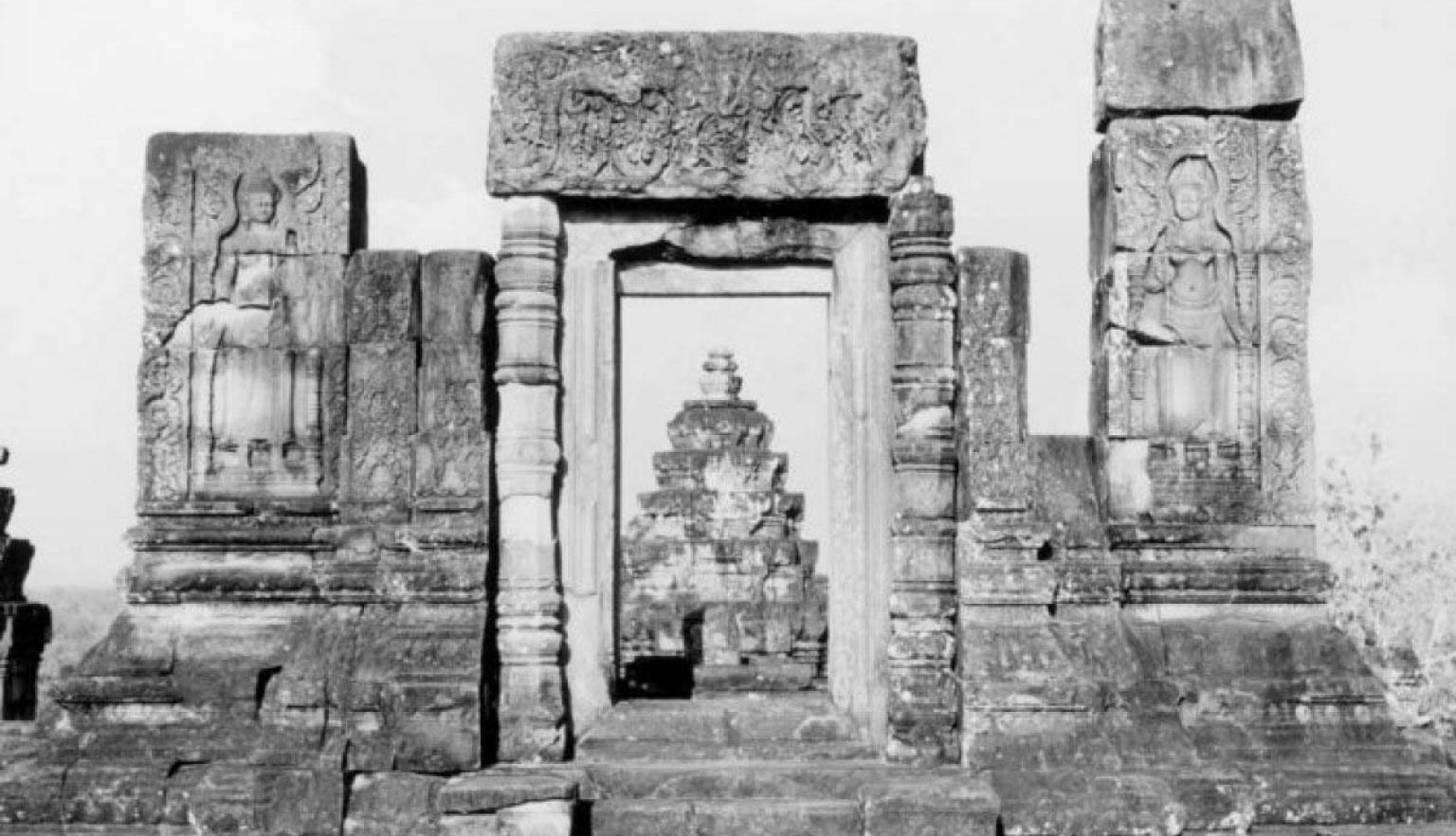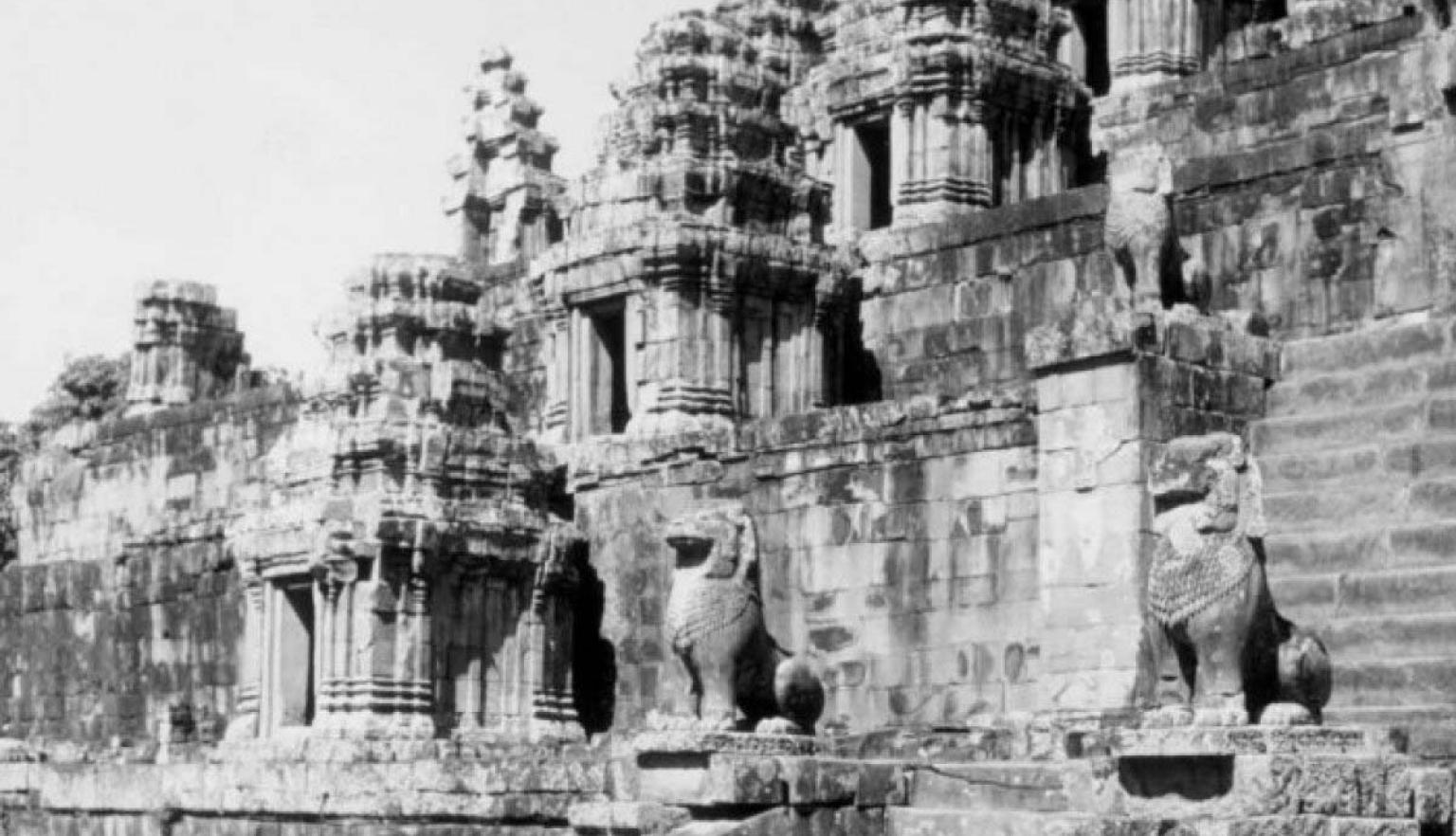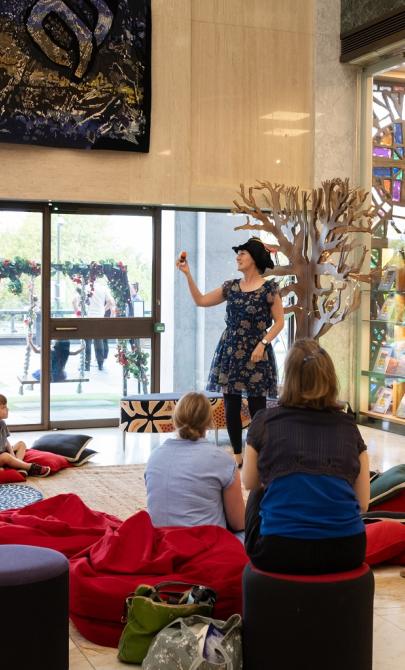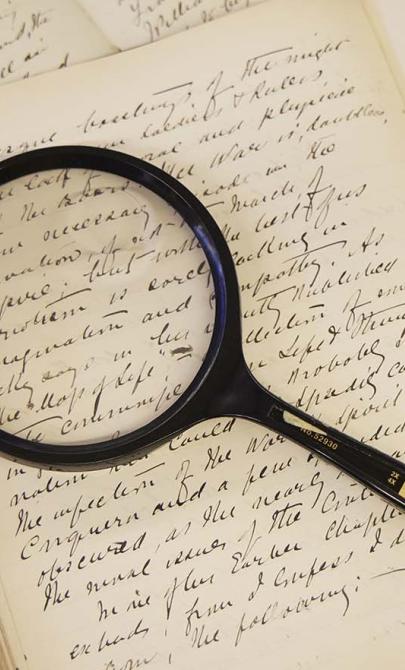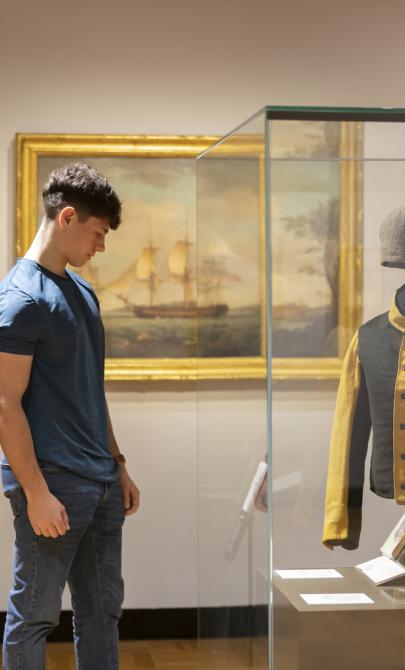The rise of Angkor and the Khmer Empire
The rise of Jayavarman II
In 781, Jayavarman II declared Chenla’s independence from the Shailendra kings. He quickly built a power base by conquering and uniting the patchwork of small kingdoms and territories in the region.
By 790, he had declared himself king of Kambuja. Through military conquest and political alliances, Jayavarman II continued to consolidate his rule.
There is scholarly debate over the meaning of the word ‘Java’ in historical inscriptions. A translation from the Sdok Kok Thom temple (in modern-day Thailand) states that “His Majesty came from Java in order to rule in Indrapura.” However, the large distance between Indrapura and central Java in Indonesia has led to suggestions that ‘Java’ may refer to another region, such as the Malay Peninsula, Sumatra, or even an area to the east of Angkor.
Despite the uncertainty, it is agreed that Jayavarman II was determined to free his country from a powerful foreign influence.
Founding of the Khmer Empire
In 802, Jayavarman II took part in a sacred ceremony on Mount Mahendraparvata. There, he was proclaimed a chakravartin — Lord of the Universe — and took the title devaraja, or God-king.
This moment is considered the founding of the Khmer Empire. The title devaraja would be used by his successors to reinforce their divine authority as absolute rulers.
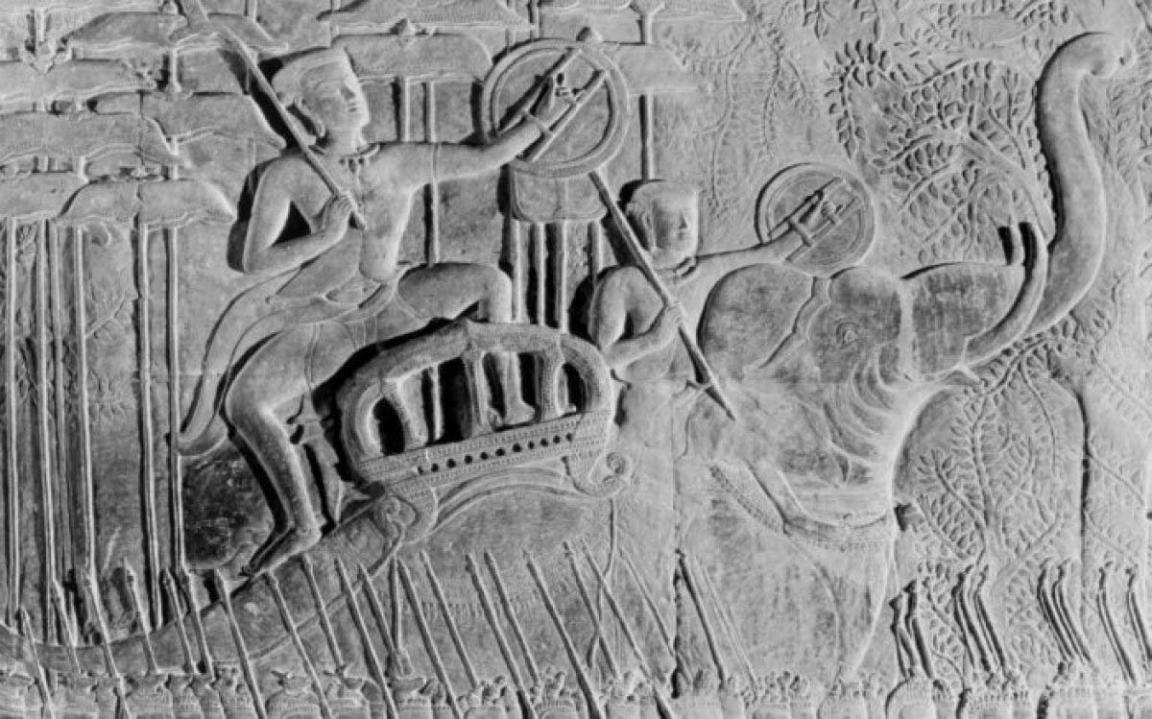
Yves Coffin, [Angkor Wat, royal parade reliefs, officer on elephant, stone carvings], nla.gov.au/nla.obj-140370956
Yves Coffin, [Angkor Wat, royal parade reliefs, officer on elephant, stone carvings], nla.gov.au/nla.obj-140370956
Building cities and temples
Jayavarman II ruled for part of his reign from the city of Hariharalaya, where he died in 835. The city grew under his successor, Indravarman I (877–886), who led an extensive building campaign. He constructed temples, palaces and one of the first large-scale hydrological systems — a key feature of later Khmer cities.
For more on Khmer engineering, see the Building Angkor module.
The founding of Angkor and Yasovarman I
Between 889 and 900, Indravarman’s son, Yasovarman I, moved the capital northwest to the plains near the mountain Phnom Bakheng. He founded a new city called Yasodharapura (‘City that Maintains Glory’), also known as Angkor (‘Capital City’). A raised causeway linked the new capital to Hariharalaya.
Yasovarman completed the Eastern Baray — a large man-made reservoir that reflected the empire’s mastery of water management.
Angkor as a political and spiritual centre
Angkor became the heart of the empire — a political, cultural and religious capital. It was ideally located between the mountains and the Tonlé Sap lake, with fertile land that could support a large population. Recent archaeological research suggests that at its height, Angkor may have supported more than one million people.
Angkor remained the capital of the Khmer Empire until its decline in 1431, with only brief interruptions.
Royal power and divine rule
Khmer kings were skilled builders and rulers. They constructed grand temples dedicated to the gods, their ancestors, and themselves. The devaraja cult helped establish the king’s divine status and authority.
Although considered god-like, the kings still needed resources to run the empire and fund their building projects. As supreme rulers, they could levy taxes and recruit labour for construction and military service. Different kings reformed the administration to improve how taxes and services were collected, especially in distant provinces.
Administration and taxation
The role of local officials changed over time. In some periods, provincial officers were granted more authority to enforce the king’s rule. In others, power was centralised in the capital.
The Khmer Empire did not have a currency-based economy. Taxes were usually paid in goods — mainly rice, but also oil and cloth.
By reshaping the administration, kings could reward loyal followers with titles such as Chief of Elephants or symbolic honours like the White Parasol. They could also remove land and status from those they viewed as disloyal.
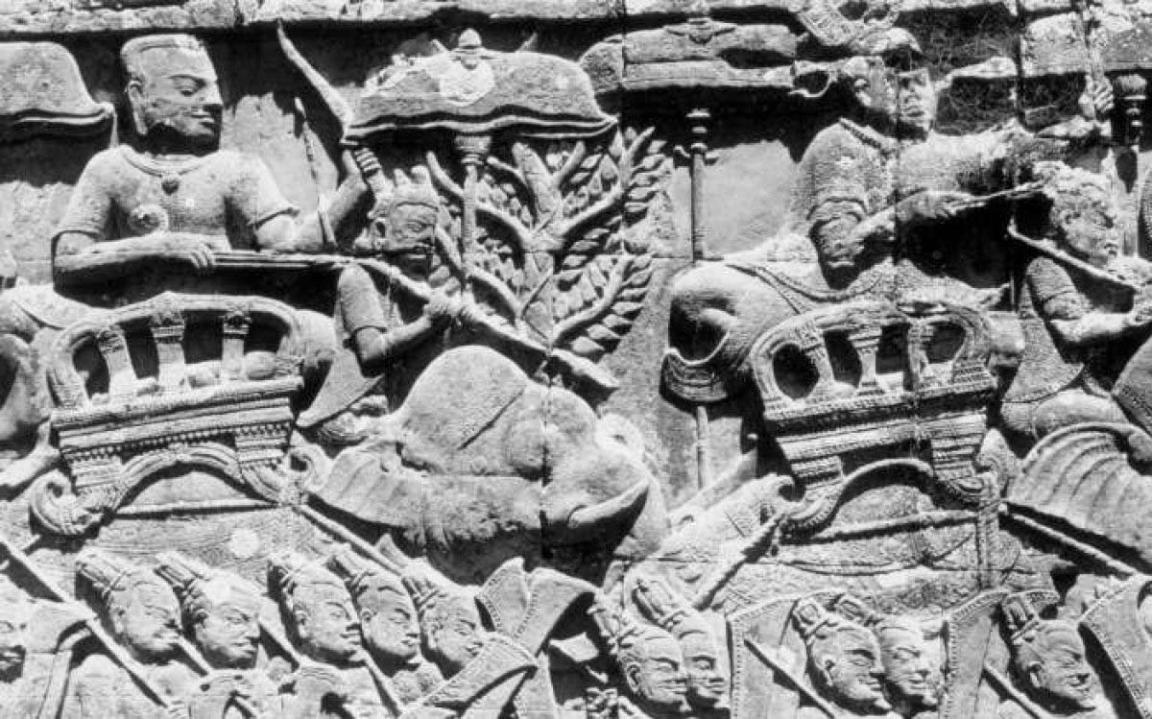
Yves Coffin, [Bayon, Angkor Wat, reliefs outer gallery, stone carvings], nla.gov.au/nla.obj-140371101
Yves Coffin, [Bayon, Angkor Wat, reliefs outer gallery, stone carvings], nla.gov.au/nla.obj-140371101
Learning activities
Activity 1: Explore the role of origin stories
Many cultures have stories that explain how the world, a people or a nation began. These stories often shape how people understand their identity and their place in the world. Discuss why these stories appear in so many cultures and what role they play in forming a national or cultural identity.
Activity 2: Plan a successful city
Cities thrive in places where people can survive and connect with others. Make a list of what a city needs to grow and succeed — such as food, fresh water, access to resources, good transport, and defence. Use an atlas or online map to find a location that meets these needs, then plan a tenth-century city for that place. Think about why you chose the location and what your city would include.
Activity 3: Investigate the idea of a ‘God-king’
Jayavarman II called himself devaraja, or God-king — a title that helped him and later rulers strengthen their control over the empire. Think about what kind of image the title ‘God-king’ creates and how it might have helped a leader hold power. Research other examples from history where rulers claimed to be divine, such as through the Imperial Cult.
